The 10 Best Eating Habits to Fight Inflammation
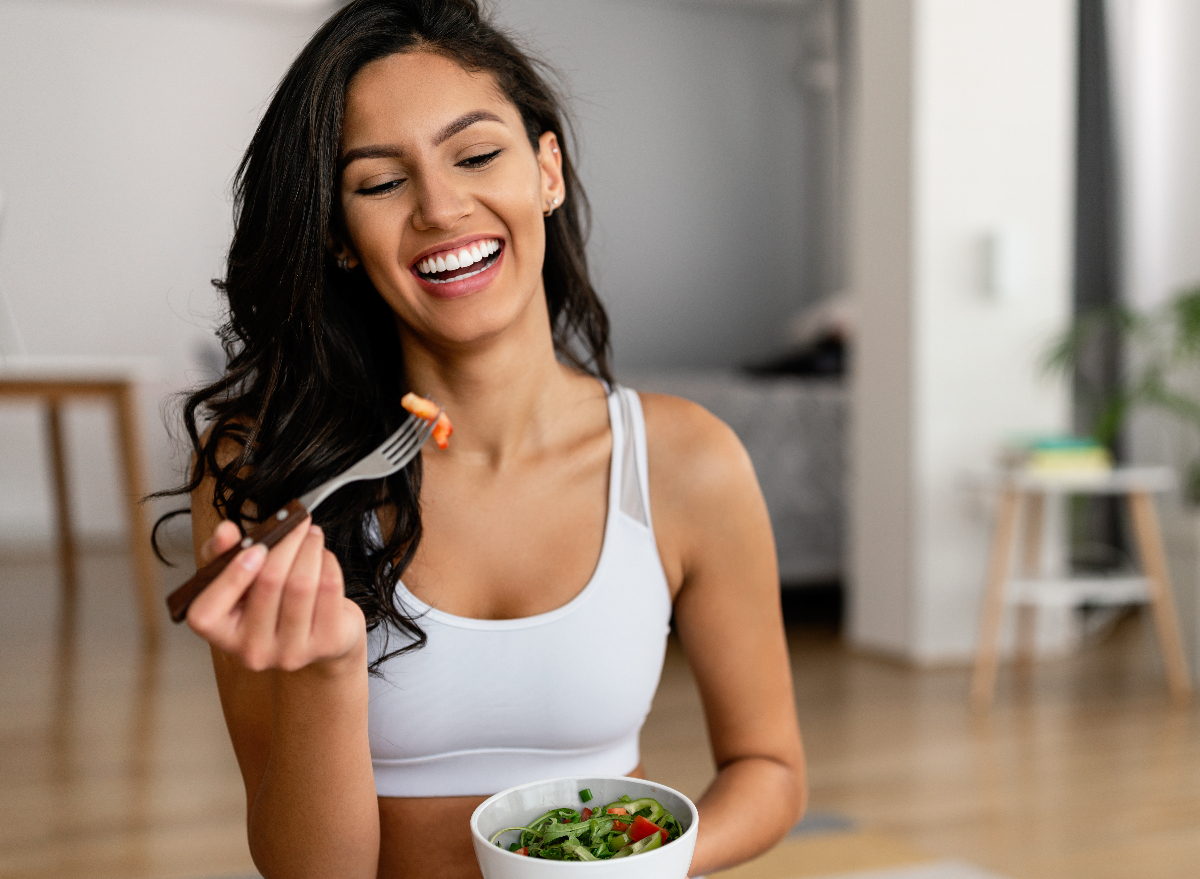
You may hear the term "inflammation" thrown around, and it's almost always paired with the notion that experiencing it may be something that is guaranteed to result in negative health outcomes. And while it is true that chronic inflammation may be linked to health concerns, not all inflammation is necessarily bad.
Inflammation is the body's natural response to injury, infection, or irritation. And even though the wellness world makes inflammation sound like a bad word, sometimes, inflammation can be a good thing. If you experience an injury or infection, acute inflammation acts as the body's first line of defense. When a foreign pathogen enters your body or an injury occurs (like when you stub your toe—the worst!), your immune system triggers an inflammatory response, resulting in immune cells moving toward the site of injury or illness to help heal.
But while acute inflammation can be an important part of keeping your body healthy, chronic inflammation is another story. Persistent inflammation is linked to numerous health conditions such as metabolic syndrome, cardiovascular disease, type 2 diabetes, and non-alcoholic fatty liver disease. It can cause tissue damage and organ dysfunction over time and is also associated with autoimmune disorders where the body's immune system mistakenly attacks healthy cells.
So, why does chronic low-grade inflammation happen? A combination of genetics, dietary choices, lifestyle habits, and exposure to certain environmental toxins may be to blame. When it comes to diet, eating certain foods has been linked to inflammation in the body. Processed meats, trans fats, refined sugars, and alcohol are common foods and drinks that people limit or avoid when trying to reduce chronic low-grade inflammation.
As for the dietary habits that may help fight chronic low-grade inflammation? Here are ten of the best eating habits that you may want to explore.
Eat fish twice a week.
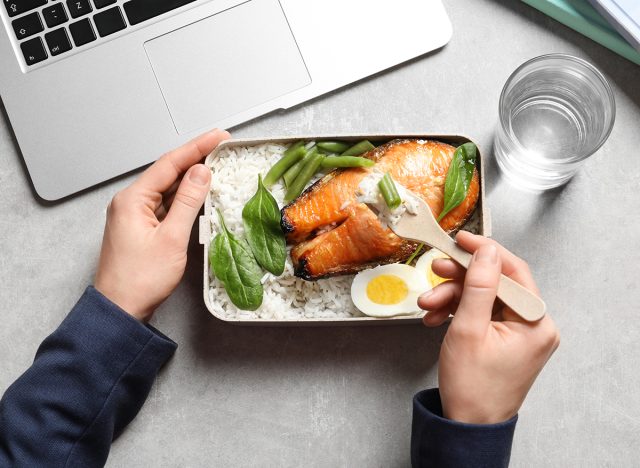
The American Heart Association recommends eating two servings of fish (particularly fatty fish) every single week—a goal most Americans are not meeting. "Salmon provides quality protein, essential omega-3 fatty acids EPA and DHA, vitamin D, and other nutrients," Caroline Thomason, RD, CDCES, a Washington, DC-based dietitian and nutrition partner with Alaskan Seafood shared.
"EPA and DHA have proven anti-inflammatory properties, and you won't find better food sources than fatty fish". Thomason recommends salmon out of Alaska, as all Alaskan seafood is guaranteed to be wild and sustainably caught, which means it's low in contaminants.
Include more nuts in your diet.
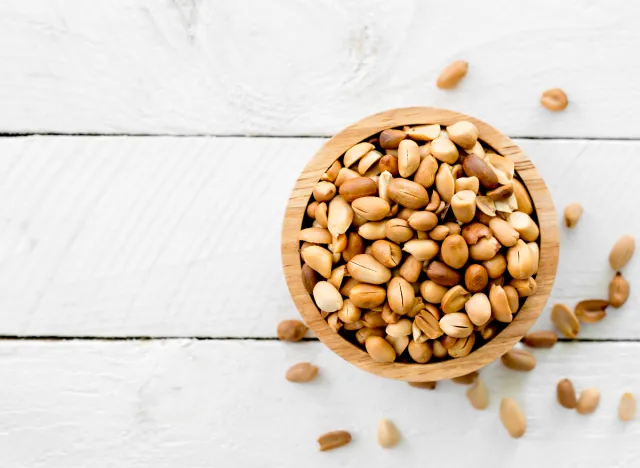
Nuts may be best known as a plant-based source of protein. But they also deserve to get attention over their rich phytochemical content, a factor that may help combat inflammation. Data has shown that higher nut consumption was associated with lower C-reactive protein (a marker of inflammation).
Pistachios are a complete source of plant-based protein (aka they provide all of the essential amino acids) that may be a noteworthy nut to include in your diet if you are trying to fight chronic inflammation. Several reports have demonstrated the effectiveness of pistachio against oxidative stress and inflammation. And a study published in Nutrients showed that the polyphenol extracts from pistachios have anti-inflammatory properties.
Consume dairy foods.
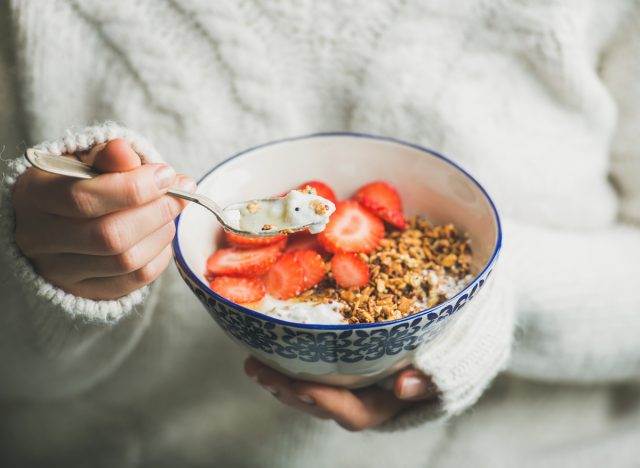
"There have been three systematic reviews (these are research studies that compile the results of several other research studies) over the last six years showing dairy foods – specifically milk, cheese, and yogurt – have neutral to beneficial effects on inflammation," Kerry Hackworth, MS, RD, LDN, Director, Nutrition Affairs at National Dairy Council, shared.
She also highlighted an inflammation ranking system that was published in The Journal of Nutrition. This system listed dairy foods (both whole-fat and low-fat milk, cheese, and yogurt) as one of the top food groups that were linked to lower levels of inflammatory biomarkers.
Add watercress to your plate.
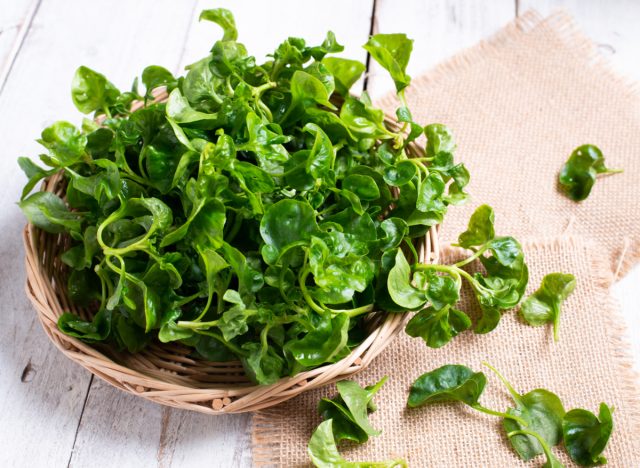
Watercress is a unique aqueous green vegetable that adds a slightly peppery taste to your plate. It is jam-packed with many nutrients and it is a low-calorie food.
Watercress is also a natural source of a compound called phenylethyl isothiocyanate (PEITC). This bioactive compound has anti-inflammatory effects, helping people potentially reduce certain markers of inflammation. It also has been shown to offer anti-cancer properties, making this veggie a doubly positive addition to a healthy diet.
In the same ranking system that listed dairy as an anti-inflammatory food, cruciferous vegetables were among one of the top anti-inflammatory foods as well.
Cook with olive oil.

Incorporating olive oil into your diet can also play a crucial role in fighting inflammation. Extra virgin olive oil is high in antioxidants known as polyphenols, which possess anti-inflammatory properties. A particular polyphenol called oleocanthal has similar anti-inflammatory effects as ibuprofen. Moreover, olive oil is heart-friendly and can help reduce the risk of chronic diseases. Whether used for cooking or as a salad dressing, adding olive oil to your meals can significantly contribute to an anti-inflammatory diet.
Enjoy berries for dessert.
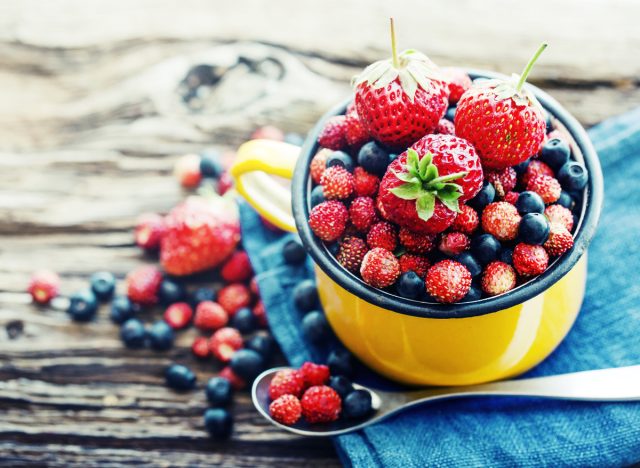
Berries, like strawberries, blueberries, and raspberries, are not only delicious and free from added sugar, but also packed with a variety of anti-inflammatory compounds. They are high in anthocyanins, which are flavonoids that give berries their vibrant color and have potent antioxidant and anti-inflammatory effects. Studies have shown that these compounds can have anti-inflammatory effects, highlighting how including them in your diet may offer important health benefits.
Limit or avoid alcohol.

Another key factor in managing inflammation is moderating alcohol consumption. While moderate drinking—up to one drink per day for women and two drinks per day for men—may have some protective effects on the heart, excessive alcohol consumption can lead to a host of health problems. High levels of alcohol intake may promote inflammation in the body, contributing to chronic diseases such as liver disease, heart disease, and certain types of cancers.
Try enjoying a glass of pomegranate juice in a wine glass for a wine-like booze-free drink that provides a compound with inflammation-fighting effects called ellagitannins.
Have an apple with nut butter at snack time.
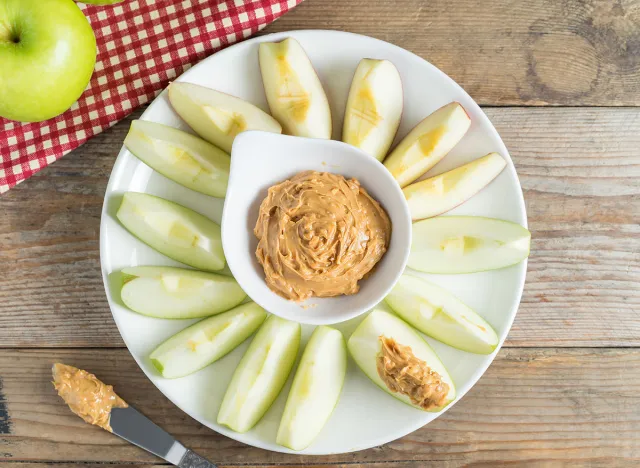
Apples are an excellent addition to an anti-inflammatory diet. Not only are they a rich source of dietary fiber, which aids in digestive health, but they also offer a substantial amount of quercetin. Quercetin is a flavonoid known for its strong antioxidant properties and it may help manage chronic inflammation. Scientific research suggests that quercetin can help in the prevention and treatment of various inflammatory diseases such as heart disease, inflammatory bowel disease, and arthritis. Remember, an apple a day keeps the doctor away!
Pairing your apple with some natural nut butter can give your snack a one-two punch in the anti-inflammatory department.
Swap soda with sugar-free seltzer.

Sodas and other sugary beverages should be avoided on an anti-inflammatory diet. These drinks are high in added sugars, which can trigger a surge in insulin levels and promote inflammation. Moreover, they offer no nutritional value and can lead to weight gain, which itself is a risk factor for inflammation. Opt for sugar-free alternatives like seltzer water if you can't do without that effervescence that soda offers.
Sip on green tea.

Instead of drinking that sugary soda, try a cozy mug of green tea instead to fight inflammation. Green tea contains a compound called epigallocatechin-3-gallate (EGCG) which may have anti-inflammatory effects.
If you are going to start drinking green tea to help fight chronic low-grade inflammation, be sure to limit or avoid adding excessive amounts of added sugars, as this addition may have pro-inflammatory effects.
- Source: Schulze H, Hornbacher J, Wasserfurth P, Reichel T, Günther T, Krings U, Krüger K, Hahn A, Papenbrock J, Schuchardt JP. Immunomodulating Effect of the Consumption of Watercress (Nasturtium officinale) on Exercise-Induced Inflammation in Humans. Foods. 2021; 10(8):1774. https://doi.org/10.3390/foods10081774
- Source: Fish and omega-3 fatty acids. (2023, October 9). www.heart.org. https://www.heart.org/en/healthy-living/healthy-eating/eat-smart/fats/fish-and-omega-3-fatty-acids
- Source: Rajaram, S., Damasceno, N. R. T., Braga, R. A. M., Martinez, R., Kris-Etherton, P., & Sala-Vila, A. (2023). Effect of Nuts on Markers of Inflammation and Oxidative Stress: A Narrative Review. Nutrients, 15(5), 1099. https://doi.org/10.3390/nu15051099
- Source: Rajaram, S., Damasceno, N. R. T., Braga, R. A. M., Martinez, R., Kris-Etherton, P., & Sala-Vila, A. (2023). Effect of Nuts on Markers of Inflammation and Oxidative Stress: A Narrative Review. Nutrients, 15(5), 1099. https://doi.org/10.3390/nu15051099
- Source: Paterniti, I., Impellizzeri, D., Cordaro, M., Siracusa, R., Bisignano, C., Gugliandolo, E., Carughi, A., Esposito, E., Mandalari, G., & Cuzzocrea, S. (2017). The Anti-Inflammatory and Antioxidant Potential of Pistachios (Pistacia vera L.) In Vitro and In Vivo. Nutrients, 9(8), 915. https://doi.org/10.3390/nu9080915
- Source: Byrd, D. A., Judd, S. E., Flanders, W. D., Hartman, T. J., Fedirko, V., & Bostick, R. M. (2019). Development and validation of novel dietary and lifestyle inflammation scores. Journal of Nutrition, 149(12), 2206–2218. https://doi.org/10.1093/jn/nxz165
- Source: Coscueta, E. R., Sousa, A. S., Reis, C. A., & Pintado, M. M. (2022). Phenylethyl Isothiocyanate: A Bioactive Agent for Gastrointestinal Health. Molecules (Basel, Switzerland), 27(3), 794. https://doi.org/10.3390/molecules27030794
- Source: Gupta, P., Wright, S. E., Kim, S. H., & Srivastava, S. K. (2014). Phenethyl isothiocyanate: a comprehensive review of anti-cancer mechanisms. Biochimica et biophysica acta, 1846(2), 405–424. https://doi.org/10.1016/j.bbcan.2014.08.003
- Source: Lucas, L., Russell, A., & Keast, R. (2011). Molecular mechanisms of inflammation. Anti-inflammatory benefits of virgin olive oil and the phenolic compound oleocanthal. Current pharmaceutical design, 17(8), 754–768. https://doi.org/10.2174/138161211795428911
- Source: Zhang, H., Xu, Z., Zhao, H., Wang, X., Pang, J., Li, Q., Yang, Y., & Ling, W. (2020). Anthocyanin supplementation improves anti-oxidative and anti-inflammatory capacity in a dose-response manner in subjects with dyslipidemia. Redox biology, 32, 101474. https://doi.org/10.1016/j.redox.2020.101474
- Source: Bishehsari, F., Magno, E., Swanson, G., Desai, V., Voigt, R. M., Forsyth, C. B., & Keshavarzian, A. (2017). Alcohol and Gut-Derived Inflammation. Alcohol research : current reviews, 38(2), 163–171.
- Source: Aghababaei, F., & Hadidi, M. (2023). Recent Advances in Potential Health Benefits of Quercetin. Pharmaceuticals (Basel, Switzerland), 16(7), 1020. https://doi.org/10.3390/ph16071020
- Source: Ohishi, T., Goto, S., Monira, P., Isemura, M., & Nakamura, Y. (2016). Anti-inflammatory Action of Green Tea. Anti-inflammatory & anti-allergy agents in medicinal chemistry, 15(2), 74–90. https://doi.org/10.2174/1871523015666160915154443









